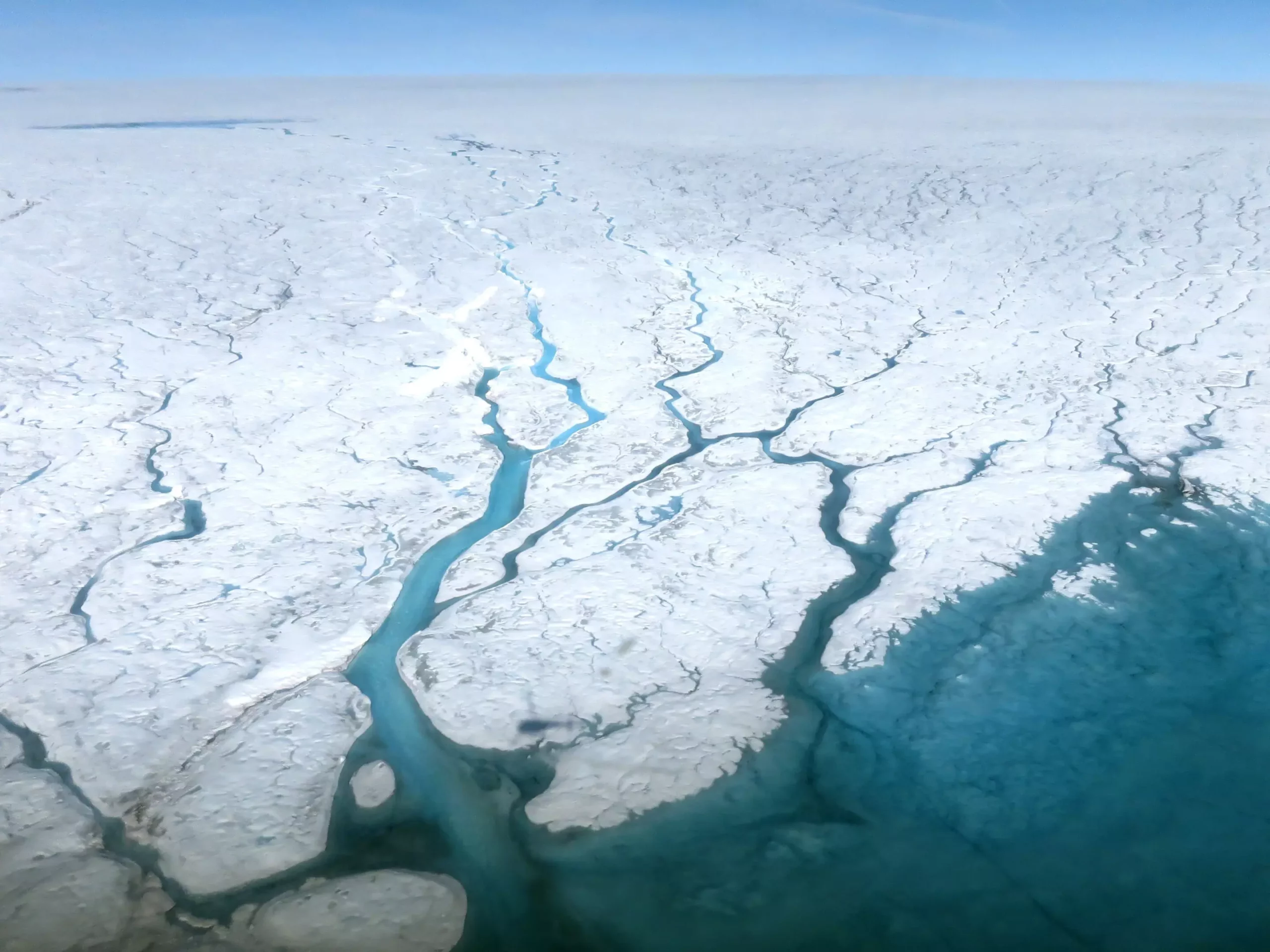Recent advances in our understanding of glaciology have unveiled a previously unidentified mechanism regarding how meltwater from ice sheets flows and freezes. This revelation holds significant implications for predicting global sea level rise, an issue of paramount importance as climate change accelerates. A collaborative approach by researchers from The University of Texas at Austin, along with NASA’s Jet Propulsion Laboratory and the Geological Survey of Denmark and Greenland, has led to a compelling discovery that reshapes our understanding of the dynamics within ice sheets.
The study, led by graduate student Mohammad Afzal Shadab and guided by seasoned experts Marc Hesse and Cyril Grima, identifies the formation of impermeable horizontal ice layers beneath the surface of ice sheets as a critical factor influencing meltwater runoff. This work, published in *Geophysical Research Letters*, draws attention to how conventional understandings of firn—an intermediate stage of snow that has not yet compacted into ice—fail to account for its complex behavior during melting events.
Traditionally, firn has been viewed solely as a reservoir that could absorb and freeze meltwater, thus mitigating its flow to the oceans. However, the findings suggest that impermeable ice layers can instead act as conduits for meltwater to flow directly into the sea. This duality within firn’s behavior challenges existing assumptions and emphasizes the necessity of understanding the intricacies involved in the freezing dynamics of firn.
At the heart of the research lies a mechanism that depicts ice layer formation as a competition. Two processes are at play: warm meltwater infiltrating through the porous firn (referred to as advection) and the freezing action of the cold ice above (heat conduction). The research suggests that the depth at which heat advection gives way to heat conduction determines the creation of new ice layers. This nuanced understanding marks a significant shift from previous models formulated from mountain firn, which could not accurately predict the conditions in Greenland.
Hesse notes the mismatch between the quantity of meltwater generated during extreme melting events and the amount necessary to form significant surface ponds. This realization underscores the need for a refined approach to modeling the behavior of ice sheets, indicating that factors influencing ice melt and refreezing processes are distinct from those in other contexts.
To substantiate their theoretical framework, the researchers rigorously compared their models against real-world data collected from field experiments conducted in Greenland. This involved digging deep into the firn and employing thermometers and radar technology to monitor the movement and freezing of meltwater. Notably, the new models closely mirrored empirical observations, differing from previous hydrological models whose predictions largely deviated from what was actually observed.
One particularly intriguing outcome of the study was the potential of ice layer formations to act as historical records that reflect thermal conditions at the time of their formation. The models indicate that under warming scenarios, ice layers appear deeper within the firn over time, revealing a chronological progression. Conversely, in cooler conditions, layers form closer to the surface, reflecting a bottom-up development.
As we stand on the brink of heightened concern regarding sea level rise, the implications of this research are substantial. The statistics reveal that Greenland currently contributes a staggering 270 billion tons of water to the oceans annually—outpacing Antarctica, which contributes around 140 billion tons. As climate scientists gaze into the future, predictions regarding the contribution of these ice sheets to sea level rise by 2100 vary dramatically, ranging from 5 to 55 centimeters.
This variability signals a pressing need for enhanced modeling that accurately reflects the complex interplay within ice sheets, particularly the role played by ice layers—an aspect that has been poorly understood until now. Understanding that there is no straightforward path for predicting meltwater dynamics due to the intricate realities faced by ice sheets positions this research as a vital step forward in the field.
With this groundbreaking study, researchers have cast a new light on an area fraught with complexity and uncertainty. The insights gained compel the scientific community to reevaluate traditional models and assumptions about ice sheet behavior in a warming world. This deeper understanding of the mechanisms at work beneath the surface could ultimately play a pivotal role in developing more accurate forecasts for sea level rise—an urgent task as global warming continues to pose significant challenges to coastal regions worldwide.


Leave a Reply